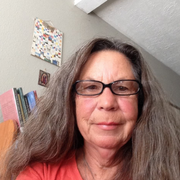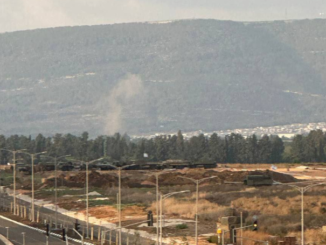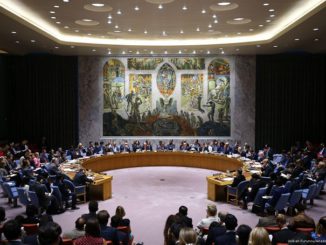
By Benay Blend
In his poem “I Come from There,” Mahmoud Darwish distinguishes himself as the poet of resistance, insistent that he could make “a single word: Homeland” stand for Palestine, the place where he will always be from, yet still “break the rule[s]” that a refugee must in order to survive.
Torn as he was between yearning for that place, but recognizing that in the Diaspora there was an opportunity to make something new, his poetry became a testament to Palestinian sumoud (resilience).
This poem encapsulates for me the meaning of Palestinian steadfastness, sumoud: a strong attachment to the land, even when in exile, but also a mental state that leads to determined action. According to Dr. Samah Jabr, Palestinians have employed the term since the time of their resistance to the imposition of the British Mandate.
Since then it has taken on various meanings depending on events: “massive displacement, life under occupation, life as a Palestinian with Israeli citizenship, imprisonment, and exile.”
There is a danger in romanticizing Palestinian resilience, or really the struggle of any oppressed peoples, particularly because no one should be expected to stay strong without ever breaking down, never be human in the face of daily turmoil. It would also be far better if Palestinian children did not have to learn this lesson as soon as they can walk.
But it is this kind of courage that inspires so many people to follow the Great March of Return on social media for nearly now a year. Despite the dire circumstances in Gaza—often no electricity, always a shortage of safe drinking water, lack of medical facilities due to the frequent intensive bombing, among other things—it has become a center of Palestinian resistance. Celebrating its one year anniversary on Land Day, March 30, 2019, the March of Return attests to past struggles that continue in the present day.
When asked by a New York Times reporter why he marched, Fadi Abu Shammalah replied that he is a firm believer in non-violent direct action as a viable strategy for Palestinian liberation. He also feels that the demonstrations have helped unify a previously fractured people. It also highlights for outsiders the terrible living conditions under which Gazans must endure.
But the most important reason, he concludes, is that one day in the future he wants to tell his children:
“Your father was part of this historic, nonviolent struggle for our homeland.”
While the Western press focuses on burning tires and throwing stones, which as an occupied people it is their legal right to do, the march stands for much more than these more sensational features.
In addition to incendiary balloons, which are launched as a feeble attempt at retaliating against Israeli snipers and bombs, the various camps are a microcosm of communal daily life. Much like three years ago at Standing Rock, which photographer Sofia Lee found “bustling with activity,” Fadi Abu Shammalah explains that the march features Gazans dancing the dabke, the traditional national dance; elders organizing educational activities featuring a circle of participants each reading a section of an appropriate book; and women cooking Palestinian specialties, such as Makhan (roasted chicken with onions, sumac and pine nuts) and maftool (a couscous dish).
At various times weddings have taken place, all within range of Israeli snipers, signifying that even in such a dangerous circumstance life goes on. All of these activities defy Israeli efforts to wipe the landscape clean of its indigenous inhabitants. When Indigenous people—both Native and Palestinian–can take such joy in the dailiness of life, their land and freedom are not commodities that can be easily taken away.
Sumoud, then, is a mental state of resilience that translates into not accepting the status quo. In this case, it means that on the one- year anniversary of the Great March of Return, commemorating yet another Land Cay, Gazans are once again risking their lives in return for the legal right of return and for a better future for their children.
As Dr. Jabr explains, such a stance requires “maintaining optimism, moral and social solidarity while dealing with grim realities and oppressive structures,” all of which are the very essence of sumoud.
Writing about “What Standing Rock Gave the World”, Jenni Monet reports that “this Indigenous-led disruption” did not end when police forcibly dispersed the encampments. Instead, it spread to other environmental struggles across the U.S., indeed to my own state of New Mexico where indigenous groups are fighting against fracking in the Greater Chaco Canyon area.
Beyond environmental struggles, Monet explains that the movement inspired a greater worldwide movement for treaty rights, preservation of sacred sites, and an overarching stand to protect Indigenous life and land.
In the end, the resilience, or sumoud, exemplified in the Great March of Return are reflected in the experiences of all colonized people who are struggling for land and freedom.
– Benay Blend received her doctorate in American Studies from the University of New Mexico. Her scholarly works include Douglas Vakoch and Sam Mickey, Eds. (2017), “’Neither Homeland Nor Exile are Words’: ‘Situated Knowledge’ in the Works of Palestinian and Native American Writers”; “Rethinking Resistance: An Ecofeminist Approach to Anti-Colonialism in Louise Erdrich, Future Home of the Living God and Larissa Sansour and Oreet Ashery, The Novel of Novel and Vovel,” D.A. Vakoch, Ed., (forthcoming); and “’O My Language, Help me to Learn / So That I May Embrace the Universe’: Transnational Feminist Communities in the Work of Palestinian Women Writers,” Gender Forum: An Internet Forum for Gender Studies 66 (2017).

– Benay Blend earned her doctorate in American Studies from the University of New Mexico. Her scholarly works include Douglas Vakoch and Sam Mickey, Eds. (2017), “’Neither Homeland Nor Exile are Words’: ‘Situated Knowledge’ in the Works of Palestinian and Native American Writers”. She contributed this article to The Palestine Chronicle.







